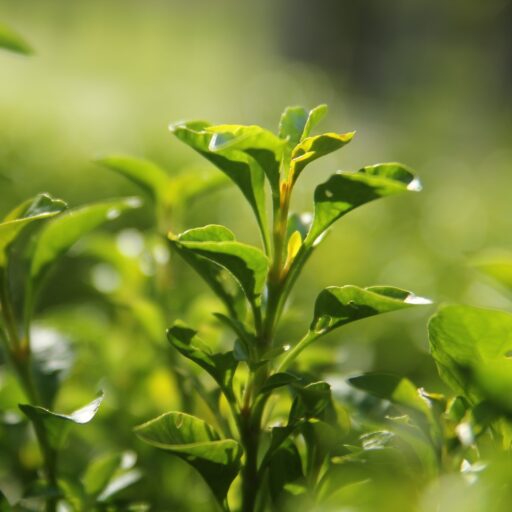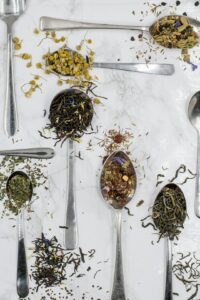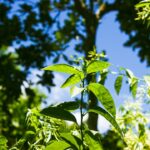Support our educational content for free when you purchase through links on our site. Learn more
[2023] What Zones Can Tea Plants Grow In? A Comprehensive Guide
Tea lovers and aspiring tea growers, rejoice! Our team at Growing Teas™ is here to answer the burning question: What zones can tea plants grow in? Whether you’re a green thumb or a tea enthusiast, we’ve got you covered with all the information you need to successfully grow tea plants in your area. So grab your favorite cup of tea and let’s dive in!
Table of Contents
- Quick Answer
- Quick Tips and Facts
- GROWING TEA PLANTS
- Can You Grow Tea Plants in the USA?
- Can Tea Plants Survive Winter?
- How Cold Can Tea Plants Tolerate?
- FAQ
- Conclusion
- Recommended Links
- Reference Links
Quick Answer
Tea plants, scientifically known as Camellia sinensis, can grow in USDA hardiness zones 7 to 9. These zones are characterized by their average annual minimum temperatures, which range from 0°F (-17.8°C) to 30°F (-1.1°C). However, with proper care and protection, tea plants can also thrive in zones 6 and 10. So, if you live in these zones, you’re in luck! Tea plants can indeed grow in your area.
Quick Tips and Facts
Before we delve deeper into the topic, here are some quick tips and interesting facts about growing tea plants:
- Tea plants prefer acidic soil with a pH level between 4.5 and 6.0.
- They require well-draining soil to prevent root rot.
- Tea plants thrive in areas with high humidity and consistent rainfall.
- The ideal temperature range for tea plants is between 65°F (18.3°C) and 85°F (29.4°C).
- Tea plants can be grown in containers, making them suitable for small gardens or balconies.
- It takes about three years for tea plants to reach maturity and produce leaves suitable for harvesting.
Now that we’ve covered the basics, let’s explore the topic in more detail.
GROWING TEA PLANTS
Tea plants, native to East Asia, have been cultivated for centuries for their leaves, which are used to make various types of tea. Growing tea plants can be a rewarding experience, but it’s important to understand the specific requirements of these plants to ensure their successful growth.
Can You Grow Tea Plants in the USA?
Tea plants can be grown in the United States, but their suitability varies depending on the region. As mentioned earlier, tea plants thrive in USDA hardiness zones 7 to 9. However, with proper care and protection, they can also be grown in zones 6 and 10. If you’re unsure about your zone, you can use the USDA Plant Hardiness Zone Map to determine the zone for your area.
In colder regions, such as zones 4 and 5, tea plants may struggle to survive the harsh winters. However, with the use of protective measures like mulching and providing shelter, it is possible to grow tea plants in these zones as well.
Check price on: Amazon | Walmart | Etsy
Can Tea Plants Survive Winter?
Tea plants are hardy and can survive winter in the appropriate zones. However, they are susceptible to cold damage, especially when exposed to freezing temperatures for extended periods. In colder zones, it’s essential to protect tea plants during winter to ensure their survival.
Here are some tips to help tea plants survive winter:
- Mulching: Apply a layer of organic mulch around the base of the plant to insulate the roots and retain moisture.
- Protective Coverings: Use frost blankets or burlap to cover tea plants during extreme cold spells.
- Container Gardening: If you’re growing tea plants in containers, move them indoors or to a sheltered area during winter.
- Microclimates: Take advantage of microclimates in your garden by planting tea plants near walls or structures that provide additional warmth and protection.
By implementing these measures, you can increase the chances of your tea plants surviving the winter months.
How Cold Can Tea Plants Tolerate?
Tea plants are generally hardy and can tolerate cold temperatures to some extent. However, their tolerance varies depending on the specific variety and the duration of exposure to cold.
Tea plants can tolerate temperatures as low as 0°F (-17.8°C) for short periods. Prolonged exposure to freezing temperatures can cause damage to the leaves and stems, leading to stunted growth or even death of the plant.
To ensure the health and survival of your tea plants, it’s best to provide them with protection during extreme cold spells, especially in zones where temperatures regularly drop below freezing.
FAQ
What are the best tea plant varieties for different zones?
Different tea plant varieties have varying tolerance to cold and heat. Here are some popular tea plant varieties suitable for different zones:
| Zone | Tea Plant Varieties |
|---|---|
| 6 | Camellia sinensis var. sinensis (Chinese tea) |
| 7 | Camellia sinensis var. sinensis (Chinese tea) |
| 8 | Camellia sinensis var. sinensis (Chinese tea) |
| 9 | Camellia sinensis var. sinensis (Chinese tea), Camellia sinensis var. assamica (Assam tea) |
| 10 | Camellia sinensis var. assamica (Assam tea) |
It’s important to note that these are general recommendations, and specific microclimates within each zone can affect the suitability of certain varieties. It’s always a good idea to consult with local experts or nurseries for the best tea plant varieties for your specific area.
Shop Tea Plant Varieties on: Amazon | Walmart | Etsy
What type of soil is best for tea plants?
Tea plants prefer acidic soil with a pH level between 4.5 and 6.0. They thrive in well-draining soil that retains moisture without becoming waterlogged. Sandy loam or loamy soil with good organic matter content is ideal for tea plants.
When planting tea plants, it’s recommended to amend the soil with organic matter, such as compost or well-rotted manure, to improve its fertility and drainage. Regular soil testing can help you monitor and maintain the pH level of the soil.
Shop Soil Amendments on: Amazon | Walmart | Etsy
Read more about “… How long does it take to grow a tea plant?”
How often should tea plants be watered?
Tea plants require regular watering to maintain healthy growth. As a general guideline, water tea plants deeply once or twice a week, providing enough water to moisten the soil to a depth of 6 to 8 inches. However, the frequency of watering may vary depending on factors such as temperature, rainfall, and soil type.
It’s important to avoid overwatering, as tea plants are susceptible to root rot in waterlogged soil. Monitor the moisture level of the soil and adjust your watering schedule accordingly.
Shop Watering Tools on: Amazon | Walmart | Etsy
Do tea plants require a lot of sunlight?
Tea plants thrive in areas with ample sunlight. They require at least 4 to 6 hours of direct sunlight daily to grow and produce healthy leaves. However, tea plants can also tolerate partial shade, especially in regions with intense summer heat.
If you’re growing tea plants in a hot climate, providing some shade during the hottest part of the day can help prevent leaf scorching and maintain optimal growth.
Conclusion
Tea plants can be successfully grown in USDA hardiness zones 7 to 9, with some varieties also suitable for zones 6 and 10. By understanding the specific requirements of tea plants, such as soil acidity, temperature range, and protection during winter, you can create an ideal environment for their growth.
Remember to choose the right tea plant varieties for your zone, provide well-draining acidic soil, water appropriately, and ensure adequate sunlight. With proper care and attention, you’ll be sipping your own homegrown tea in no time!
Now that you’re equipped with the knowledge to grow tea plants in your zone, why not explore other fascinating aspects of tea cultivation? Check out these articles on Growing Teas™ for further reading:
And don’t forget to read our related article: Can You Grow Tea Plants in the US?
Recommended Links
- Shop Tea Plants on: Amazon | Walmart | Etsy
- Shop Tea Plant Varieties on: Amazon | Walmart | Etsy
- Shop Soil Amendments on: Amazon | Walmart | Etsy
- Shop Watering Tools on: Amazon | Walmart | Etsy
And don’t forget to visit the Growing Teas™ website for more tea-growing resources: Growing Teas™
Reference Links
- USDA Plant Hardiness Zone Map: USDA
- Tea Plant Care Guide: The Spruce
- Tea Planting Guide: Gardening Know How





